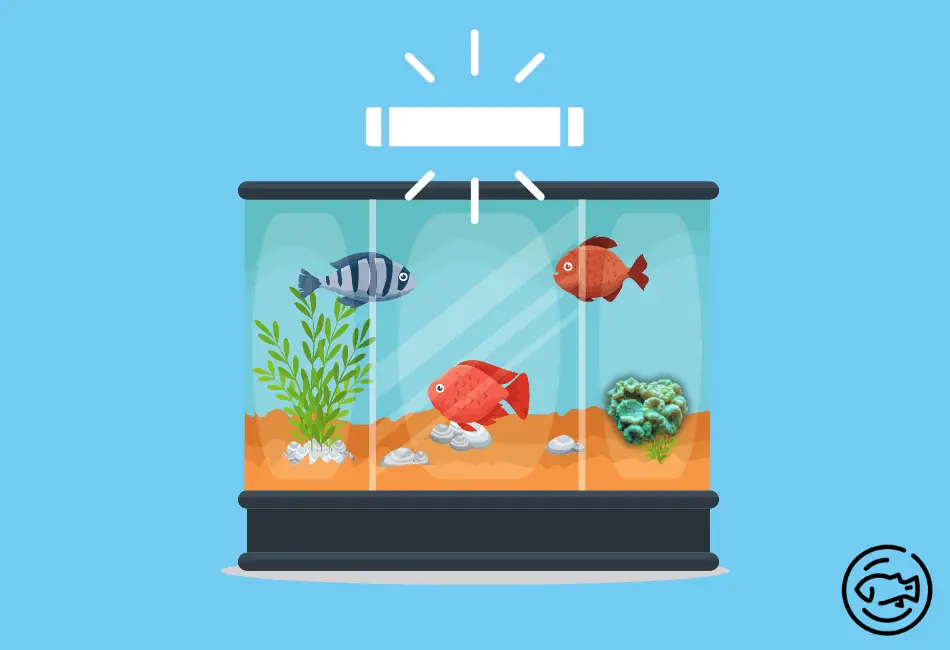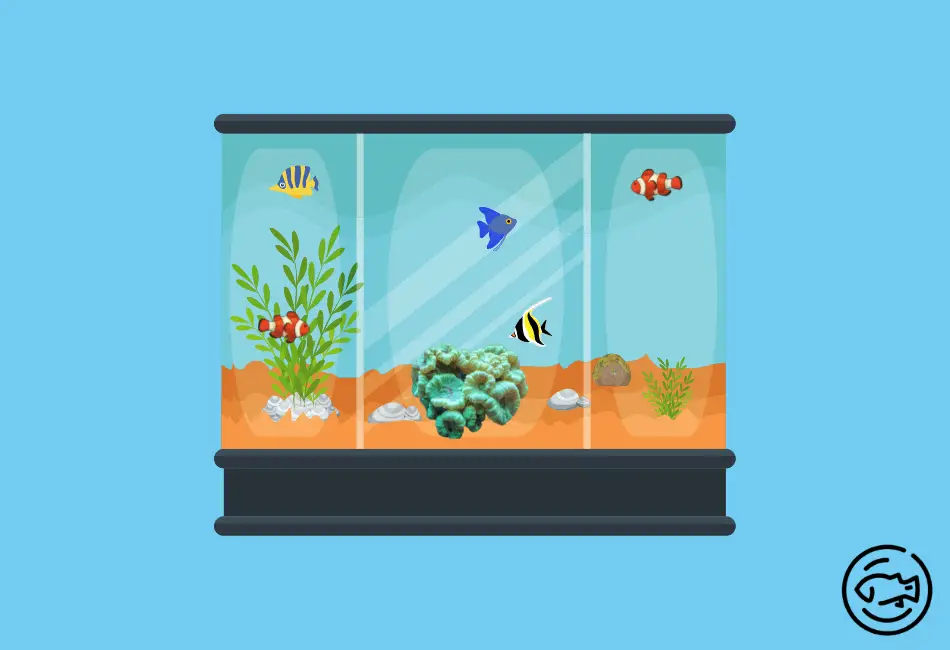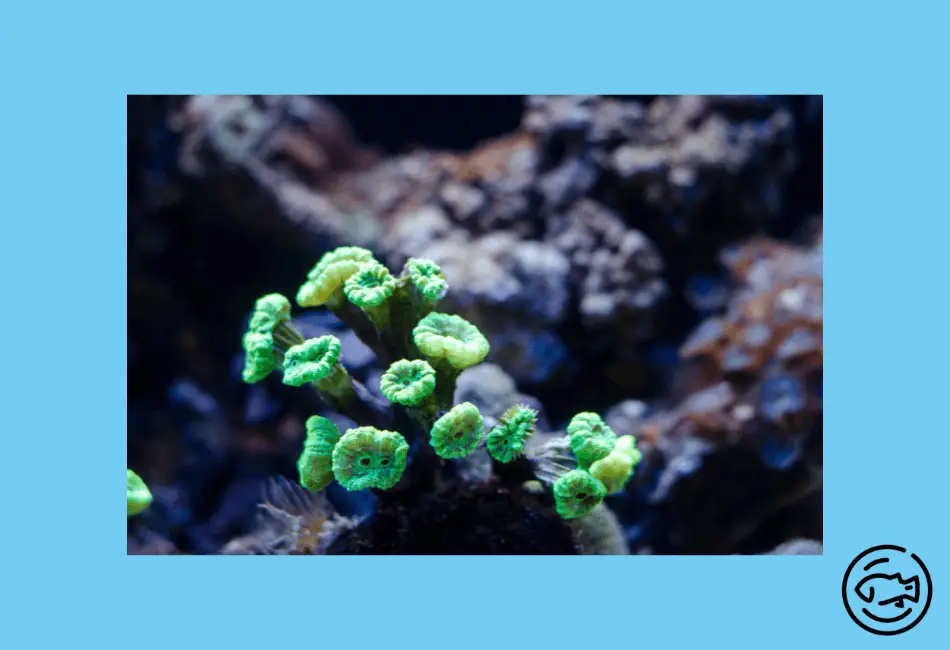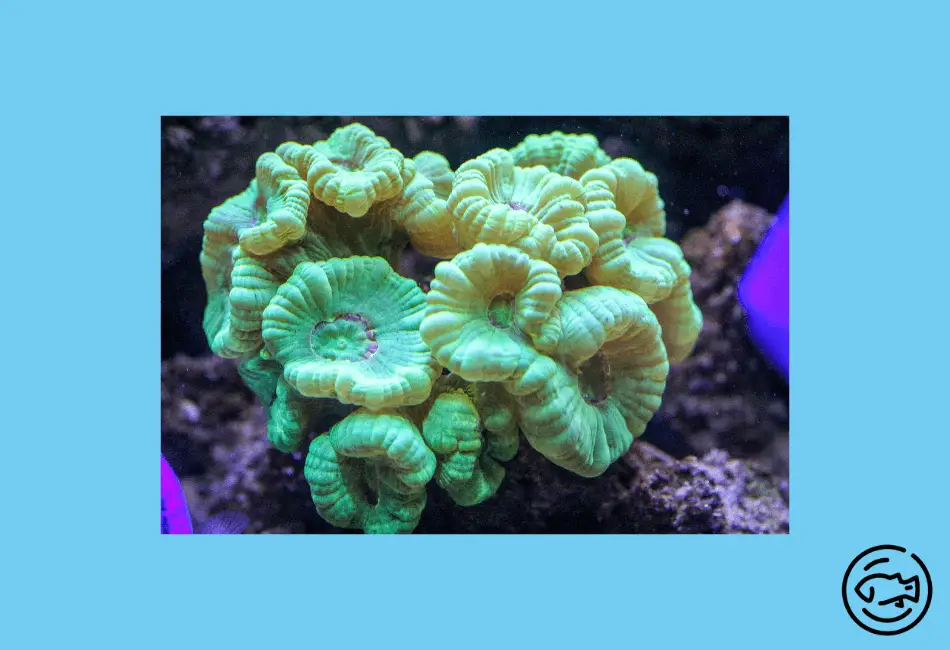Have you ever seen a candy cane coral in an aquarium?
They are magnificent creatures as it is a type of stony coral and is part of the order of Alcyonacea as they are found in warm tropical waters worldwide.
They get their name from their long, white “candy cane” like tentacles. These corals are very popular in the aquarium trade and make a beautiful addition to any saltwater aquarium.
When it comes to candy cane coral care, they are easy to care for, and they do best in aquariums that have plenty of live rock for them to attach to, plus they will also need good water quality and lighting.
They are photosynthetic and need light to help them grow and the best way to provide light and maintain good water quality is to purchase an LED light for your aquarium.
The LED lighting will give you the best of both worlds as your candy cane corals will get the lighting it needs, and your aquarium water quality will be better than ever.
Candy Cane Coral Care
Water Requirements

The essential part you need to do when caring for a candy cane coral is to ensure that you have good quality water.
They are susceptible to pH, salinity, and other factors.
Using RO/DI water is best when setting up your aquarium as this will help guarantee that your water is as pure as possible.
To comfortably house candy cane corals, your aquarium should be at least 20 gallons and your aquarium should have a proper filtration system and moderate water flow.
The best way to do this is to use a reverse osmosis filter as this will remove all the impurities from your water and leave you with pure, salty water.
Regarding water temperature, candy cane corals prefer water between 72-78° Fahrenheit, with a pH of 8.2-8.4 and a specific gravity of 1.023-1.025 ideal. Along with these parameters, your water should also be alkaline with a calcium concentration of 380-430ppm.
Without these ideal conditions, your coral will be:
- More susceptible to disease
- More likely to expel their symbiotic algae (zooxanthellae), which will cause the coral to bleach
- Less likely to thrive and grow
- Not thrive and may eventually die.
Lighting Requirements

As we mentioned before, candy cane coral is a photosynthetic creature.
This means that they need light to grow and thrive and the best way to provide them with the lighting they need is to purchase an LED light for your reef tank.
Regarding light intensity, candy cane corals prefer moderate to high lighting. However, they can adapt to lower lighting conditions if necessary.
If you use an LED light, you will want to ensure it is on for at least 10 hours daily.
There are many diverse kinds of lighting that you can utilize for your candy cane coral reef tank. The type of lighting you employ will depend on your aquarium size and the style of coral species you have.
Some people prefer metal halide lighting because it provides a very intense light. However, this type of lighting can be costly and produce a lot of heat. If you decide to use this type of lighting, you must ensure that your aquarium is well-ventilated.
Feeding

Candy cane coral is a filter feeder, meaning they filter tiny food particles out of the water.
In the wild, they mostly eat planktonic organisms. However, they will also eat frozen or live foods in the aquarium.
You will want to purchase quality frozen or live food to feed your candy cane corals.
You can also buy quality coral food specifically made for filter-feeding invertebrates.
Regarding how much you should feed your candy cane corals, it is best to be on the side of caution.
It is better for them to underfeed them than to overfeed them as overfeeding can cause them to expel their symbiotic algae (zooxanthellae), which will cause them to bleach.
Additionally, you will want to ensure you are not overfeeding the other inhabitants of your reef tank. If you are feeding your candy canes live food, you will want to make sure that there are no uneaten pieces of food floating around in the water.
Also Read: Fish That Looks Like A Dragon!
Tank Mates

Candy cane coral placement can be done with a variety of different tank mates. However, there are a few things that you need to take into account when choosing tank mates for them.
-Candy cane corals can grow quite large, so you will want to ensure that you have a large enough aquarium to accommodate them.
-They can be aggressive towards other corals, so you will want to make sure that you choose tank mates that they will not bully.
-They need good water quality, thus providing proper filtration for your aquarium.
Some good tank mates for candy cane coral include clownfish, tangs, gobies, small shrimp, angels, and other peaceful fish. You will also want to ensure that you have plenty of live rock and sand to hide in if they feel threatened.
Tank mates to avoid:
Candy cane corals can be aggressive towards other corals, so you will want to avoid tank mates that will not be able to defend themselves. Additionally, you will want to prevent tank mates known for being aggressive towards corals.
Some fish you will want to avoid keeping with candy cane coral include triggerfish, dottybacks, lionfish, and eels. These fish are known to be aggressive towards corals and can easily damage or kill them.
Coral Reef Compatibility:
Candy canes are typically compatible with many coral reef fish and invertebrates. They can be aggressive towards other sessile invertebrates, so giving them some space in the aquarium is best.
Candy Cane Coral Reproduction

Candy canes reproduce asexually by fragmentation.
This means that candy cane can break off a piece of itself, and that piece grows into a new coral. This process is known as budding.
In the wild, candy cane corals will fragment when they are stressed. However, candy cane can be manually fragmented in the aquarium if you want to propagate them.
To fragment your candy cane coral, you will need a sharp knife or pair of scissors.
You will want to ensure that the blade is sterilized before using it and once you have fragmented your coral, you can either place the pieces back into the main aquarium or set up a propagation tank for them.
If you decide to set up a propagation tank, you will need to make sure that:
- the water quality is good, and the lighting is not too intense.
- You provide plenty of live rock and sand for them to attach to.
- You do not overcrowd the tank.
It is also essential to mention that when you fragment your coral, it will go through a period of stress. During this time, they will be more susceptible to disease, and their growth will be slowed.
Disease
Candy canes are relatively hardy coral species, and they do not get sick often. However, there are occasional ailments that they can get.
–White Plague: This bacterial infection will cause the coral to turn white.
–Yellow Blotch Disease: This viral infection will cause yellow patches on the coral.
–Blackband Disease: This occurs when the coral is under stress, and it will cause a black band to form around the edge of the coral.
To prevent your coral from getting sick, you want to ensure they are not stressed. Some things that can cause stress include poor water quality, lack of food, and aggression from tank mates.
If your coral does become sick, you will want to seek out the help of a qualified aquarium professional.
Candy Cane Coral Tips
-Candy cane coral needs good water quality, so ensure you have a proper filtration system for your aquarium.
-They need to be fed small amounts of food regularly. However, you will want to ensure you are not overfeeding them.
-They can be aggressive towards other corals, especially if they are not getting enough food.
-They can reproduce asexually by fragmentation which means that they break off a piece of themselves, and that piece grows into a new coral.
-They are relatively hardy coral species, and they do not get sick often. However, there are infrequent infections that they can get and to prevent your coral from getting sick, you want to ensure they are not stressed.
Conclusion
Candy cane coral is trendy in the aquarium trade, and captive breeding is becoming increasingly common.
You can successfully keep and propagate candy cane coral in your aquarium in many ways.
Just remember to provide them with good water quality, enough food, and a little space from their tank mates, and they will do well.


